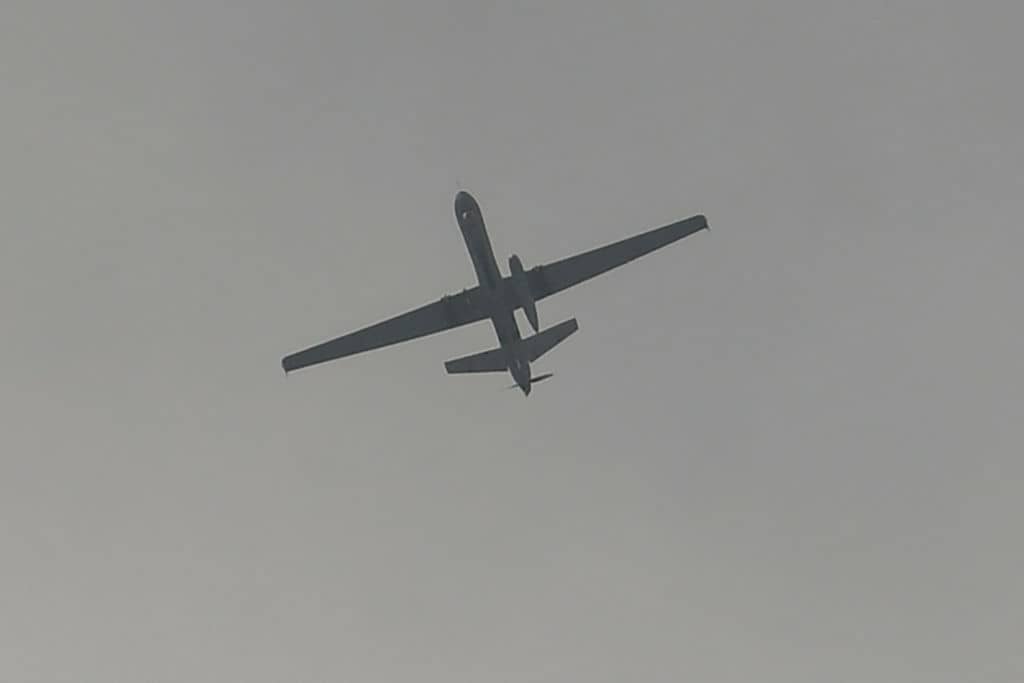In the aftermath of the 9/11 attacks, the West entered a new age: it was the era of the ‘shadow war’, in which American – and Western – might was ranged at preventing the export of terrorism from the Middle East. That was, of course, before the futile exercise of ‘nation building’ in Afghanistan and Iraq. Twenty years on, we are back where we started: Afghanistan is in the grip of a radical Islamist regime. Again it is likely to become a launch pad for Al Qaeda (and Isis) attacks in Europe and America. So how can the West defend itself from the threat?
Amidst the debacle of the hasty American withdrawal from Afghanistan, there is some good news: weapons technology has moved on considerably. The United States – and Britain – now possesses equipment that allow it to stay at arm’s length and strike out at terrorist threats as these unfold, without having boots on the ground. In the battle to prevent terrorist atrocities from taking place on the streets of London, or New York, these will prove vital.
So what do these tools look like? Intelligence assets for overhead surveillance – such as small, mission-specific satellites for imaging and signals gathering to monitor communications – have advanced dramatically. Increasingly sophisticated drone systems and smart munitions all have a crucial role to play. Artificial intelligence to process raw intelligence data is also maturing. Drone strikes against Isis-K in recent weeks used the so-called ‘Ninja Bomb’ or AGM-114R9X. This modified Hellfire missile has no warhead but in its place are six, long razor sharp blades. This is just one example of how the lethal reach has been extended in the last two decades. Other smart munitions with low-yield warheads – which limit the number of fatalities on the ground – now combine laser, infrared, and GPS guidance for maximum precision in hitting just the target.
Just how far will the United States go in violating Afghan sovereignty in the coming months?
Long-range assault helicopters and tiltrotors are also under development that will permit the insertion of special forces to attack and destroy targets and then leave. Wha’s more, the US Air Force is developing two new hypersonic missiles which will allow a stand-off capability that is rapid and precise. A new stealth bomber, the B-21, is now in flight testing.
But while the technological advancements are impressive, there’s a sticking point: all of these are at least two to five years away from entering service. Nor is it likely that western air forces will obtain basing rights in Tajikistan as they did before. These are vital for drone strikes and manned aircraft operations in hitting targets in northern Afghanistan.
So what’s the alternative? Strikes from existing bases in Qatar and Bahrain are an option but both are hardly nearby and require air-to-air refuelling. That might, in turn, mean more reliance in the short-term on the Tomahawk cruise missile – just like twenty years ago. However, the greatest challenge in the months ahead will be in gathering human intelligence — the work of spies on the ground – now that the Nato presence is gone from Afghanistan. After all, technical means of identifying developing threats can only go so far.
Undoubtedly, some intelligence assets will stay in Afghanistan to report on the activity of terrorist cells, but overnight their work has become much more difficult. The Kabul airport suicide attacks were most likely forewarned by local informants and communications intercepts. The latter will now become even more crucial as the western presence evaporates. And it remains to be seen if the Taliban will be interested in reining in extremists to further its relations with the international community. Most in government are not holding their breath.
Just how far will the US go in violating Afghan sovereignty in the coming months? How will the Taliban react to American or British search-and-destroy missions or air attacks to take out extremists on their territory?
Controlling Afghan airspace will be crucial in striking Isis-K and Al Qaeda for anything other than cruise missile attacks. That might mean not permitting the Taliban to acquire sophisticated air defence systems from Russia or China. And if they do, would the US strike and eliminate those, possibly killing Russian or Chinese technicians in the process? Or would the Pentagon use one of its ‘soft kill’ weapons such as an electromagnetic pulse detonation to disable air defence guidance systems? These are the sort of questions we will be facing in the coming months.
With the forever war over, will those in the west accept the risks of possible civilian casualties from cruise missiles and drone strikes in a new era of arm’s length warfare? The usual clamour from human rights organisations notwithstanding, many Americans have been accepting of these risks if the alternative means either a never-ending troop presence or suicide bombers on home soil. That acceptance is likely to continue.
Another occupation of Afghanistan is not on the cards but our involvement there is far from over. Regional diplomacy will be needed more than ever. But equally important will be watching, listening, targeting, and striking from afar when the situation warrants.






Comments